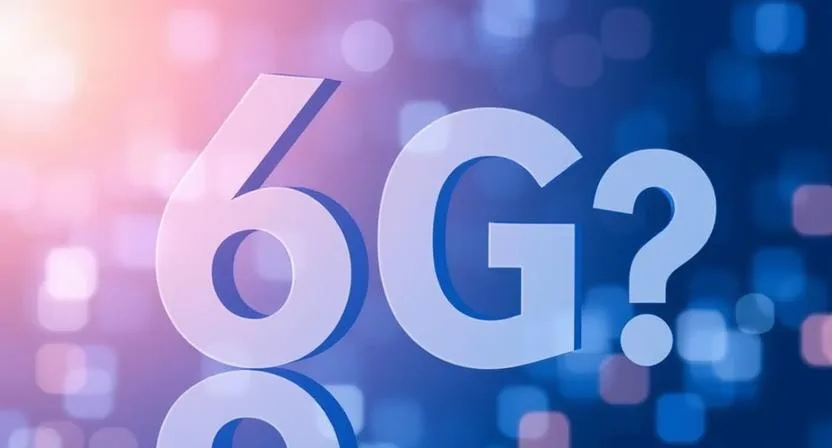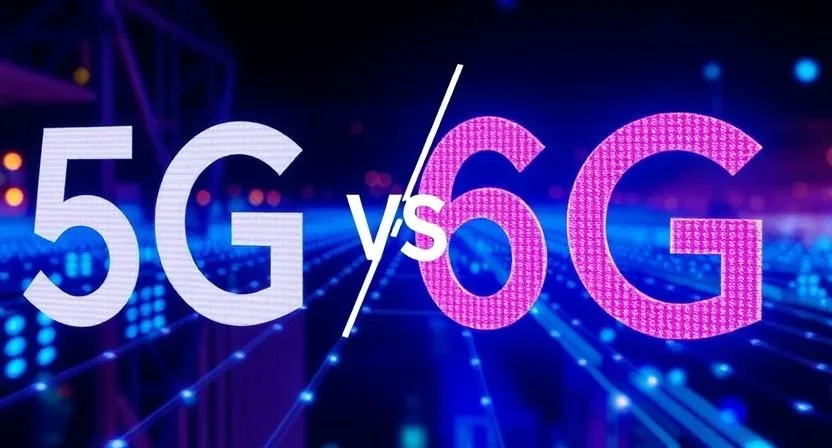Maintaining the most recent developments in an environment of ongoing technological change can be challenging. Here, we allow you to grasp the variations by contrasting 5G and 6G networks.
Wireless technologies change constantly, and 5G and 6G networks have changed our communication. These two technologies have opened up new opportunities for consumers and businesses with faster speeds and lower latency, but what’s the difference between 5G and 6G?
What is 5G?

The fifth generation of cellular network technology, 5G, follows 4G LTE. First launched in 2019, Verizon led the way with a commercial rollout starting in April of that year. Unlike 3G and 4G before it, 5G was a real leap forward technology rather than only an incremental technical development.
Among the main distinctions between 5G and its forebears is speed. 5G may theoretically reach 10 gigabits per second, 30 times faster than 4G LTE-Advanced’s 400Mbps. This technology uses wider frequency ranges than previous generations in low-band, mid-band, and high-band millimeter-waves from 24 GHz to 66 GHz. This feature increases bandwidth capacity and provides far quicker data transmission speeds.
usage situations
This technology enabled autonomous automobiles, the Internet of Things, and smart cities, creating new possibilities. Furthermore utilised to greatly enhance gaming experiences and give healthcare treatments remotely is technology.
What is 6G?

Comprising the sixth generation of cellular network technology, 6G will replace 5G. By 2030, it should be accessible and offer even higher speeds than its predecessor. Reports of 206.25 gigabytes per second attained in a Chinese lab setting already abound.
This new technology will use higher frequency ranges than 5G, from 30 to 300 GHz millimetre waves to 600 to 3000 GHz radiation.Its larger spectrum use will also help to increase coverage and dependability.
Use cases for 6G
A breakthrough technology like 6G might allow a completely different world—smart societies emphasising automation. Companies and consumers may utilise them for smart homes, autonomous transportation systems, and healthcare solutions because to their unprecedented speeds and minimal latency.
6G will enable the building of smart houses and automated transportation, therefore enabling better living conditions and environmental monitoring from which follows. With tools like holographic telepresence, AR/VR, artificial intelligence, and mobile edge computing, virtual healthcare will also reach whole new heights.
For self-driven automobiles, UAVs, and automated manufacturing, 6G technologies will provide great expansion possibilities. It is expected to be a hallmark of modernity that will greatly help to shape our next civilizations.
Differences between 5G and 6G
Spectrum consumption of 5G and 6G
Six G networks’ higher frequencies provide far quicker throughput than five G networks. This will let 6G broadcast more data in less time, therefore enabling a better user experience.
Furthermore, giving more bandwidth capacity than 5G networks are the higher frequency ranges employed by 6G networks. This makes more data-intensive apps like virtual reality and streaming video, as well as more people able to use the network concurrently, possible.
Spectrum from inside the 30 to 3000 GHz band will be used by 6G. Realizing the capacity-demanding use cases of future 6G networks requires first this crucial step.
Speed of 5G and 6G
While 6G surpasses 4G LTE in speed, both 5G and 6G technologies offer superior speeds. Using greater frequency ranges on the wireless airwaves, 6G is expected to offer theoretically maximum speeds up to 100 times faster than 5G.
For several sectors, 6G promises to provide transforming speed capabilities with far-reaching effects. From smartphones to wearables and IoT, the expected ultra-rapid communications will allow instantaneous connections between any digital device, thereby building a linked ecosystem.
Furthermore, the faster speed of 6G will enable robotics and smart manufacturing, thereby launching the fourth industrial revolution.
Beyond industrial use cases, 6G is poised to transform healthcare via telemedicine and remote surgery, as well as drive digitisation projects in industries including retail and finance.
Advancement in IoT
While smart home appliances and linked cars require low-latency connections for optimal functioning, 6G networks also transform IoT gadgets. Users of these devices should expect even better experiences with this new technology, which can handle more data without sacrificing speed or reliability.
Latency
Latency, measured in milliseconds, is the time it takes a network signal to travel. Both 5G and 6G networks have less latency than 4G LTE, but 6G has a quicker reaction time since it uses higher frequency ranges on the wireless spectrum, enabling faster device transmissions.
Security threats in 5G and 6G
Though both 5G and 6G networks present serious security concerns, 6G networks have the potential to cause even more harm. This is so because 6G networks will have more complicated use cases that might expose fresh security flaws as well as a greater attack surface than 5G networks. Furthermore, depending more on open-source software for 6G networks might expose more security concerns.
To mitigate these dangers, organisations must improve security and stay abreast of network technologies. This covers putting policies such as access control, authentication, and encryption into use to guard against malevolent actors.
Moreover, companies should be aware of the possibility of foreign infrastructure and components endangering national security and act accordingly to handle this problem.
The bottom line of 5G and 6G
Five- and six-generation networks differ in numerous ways. Although both have benefits over their predecessors, 6G is poised to transform the telecom sector by overcoming the technological constraints of 5G and enabling hitherto unheard-of breakthroughs in many spheres of communication.
Using mobile technology, trustworthiness, sustainability, and efficiency; accelerated automation to simplify and improve people’s lives and limitless connectivity for next-generation communication needs, 6G networks are expected to address some of society’s most pressing issues, bringing trustworthiness to systems and envisioning a time when technology will be even more important in improving humanity.
Related Topic:






